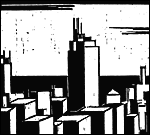John Szarkowski, Photography Until Now (Museum of Modern Art, 1990) Reissued by Little Brown & Co. in paperback in 1992. Taken from a 1989 exhibition of the same title, John Szarkowski's Photography Until Now is a readable, lucidly written cross-section through photography's history. Szarkowski, who was the director of photography at the Museum of Modern Art in Manhattan from 1962 to 1991, created the exhibit to celebrate 150 years of photography. Rather than including only the most famous works of each influential photographer in the book, Szarkowski places well-known photographs alongside advertising images, anonymous portraits, scientific documents and photos accompanying newspaper stories. The thread linking these disparate works is not, as one might expect, subject matter or art movement, but the actual technological process. Szarkowski's key concept in the book is that the development of technology has influenced photography's evolution as an art form. In his introduction, he writes that his intent is "to sketch out a history of photographic pictures, organized according to patterns of technological change." Beginning with the invention of the pinhole camera, Szarkowski traces the many stages of photography's evolution from the daguerreotype, to glass plates, to photographs in ink. Each of the book's six chapters represents an episode in photography's technological development. And for each stage, Szarkowski explains in great depth how the technique influenced the art, from the choice of subject matter to the message. In the section about photographs in ink, for instance, he shows how the sudden ability to reproduce thousands of photographs cheaply and quickly changed both the way people thought about photos and the way photographers worked. Many photographers, as Szarkowski explains, came to regard their art as a mission to portray reality and to reach the masses. "Even when there was no clear issue at stake," Szarkowski writes, "a large audience could be seen as more democratic than, and thus intrinsically superior to a small one." The result was the development of photojournalism. For Szarkowski, as one can see, context is everything. Aside from being a respected and influential curator and critic, Szarkowski is a photographer in his own right. He has also taught at numerous universities, including Columbia, Harvard, and Cornell, and has been named Director Emeritus of the Department of Photography at the MOMA. Like the exhibit it accompanied, Szarkowski's book received a great deal of praise when it was first published in 1990. Andy Grundberg, the renowned photography critic, wrote very highly of Photography Until Now in a 1990 New York Times article, praising, among other things, the elegant writing style: "[Szarkowski'] cadenced, mellifluous prose complements the nuanced, metaphoric quality of his thinking." A review in The San Francisco Chronicle also lauded Szarkowski's ability to address the technical aspects of photography without resorting to jargon or oversimplification. One of the few flaws which reviewers brought up has to do with the captions accompanying each of the photographs. Because technical details about each photo are only listed in an index at the back of the book, the reader must constantly flip between the body of the book and the material in the back. This detail, however, is far less likely to bother a layperson than a critic or a professional photographer. Weaving his rich, insightful text into a comprehensive narrative, Szarkowski is able to explore photography and its role on both the micro and macro levels. Photography Until Now works both as a general historical overview as well as a complex examination of the relationship between the medium, technology, and art. MORE: An Interview with Szarkowski about the Exhibit Ansel Adams at 100 "Atget, Pointing": An Essay by Szarkowski A Profile of Szarkowski |
 |
|||||||||||||||||||||||||||